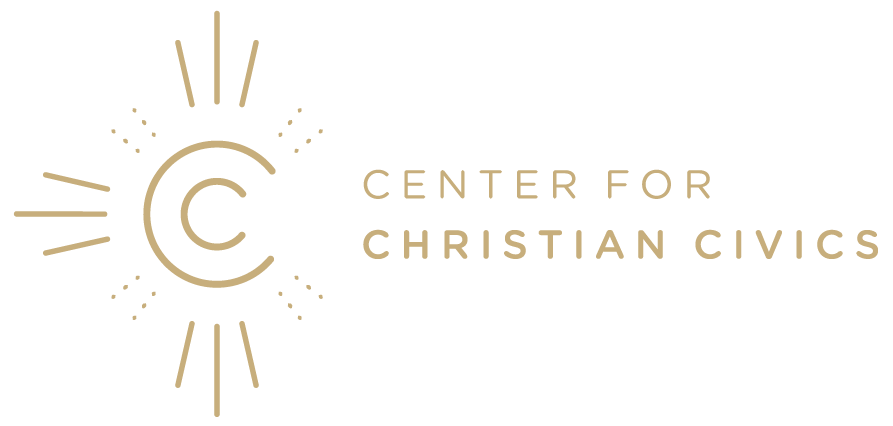Party On: The History of Republicans and Democrats
The current conservative Republican Party generally brands itself as the natural political haven for Christians in the U.S. because it defends religion in public spaces and the rights of the unborn. Meanwhile, many liberals are fueled by their Christian beliefs in their attempts to restructure tax codes or reform the justice system. Over the course of U.S. political history, presidential candidates on the left and right have both used nearly every tool and issue imaginable to argue for their causes and shore up support.
Federalism, Anti-Federalism and a One-Party System
In the 1788 election there was just one candidate: George Washington. The admired, highly respected, yet only mildly successful general of the Continental Army was a strong supporter of the Federalist platform, looking to consolidate and strengthen federal authority.There were those, however, that saw Federalism as just another attempt to silence those arguing for self-governance. The party lacked a name, only known as the Anti-Federalists in comparison, until Jefferson quit Washington’s cabinet and founded the Democratic-Republicans—a name that in modern times demands a double-take.By the end of Jefferson’s second term, the Democratic-Republicans had successfully won over the vast majority of Americans, even though their trade policies had dragged the U.S. into an avoidable and not entirely successful war. The Federalists lost the 1816 election so badly that candidates jumped ship and ran as Democratic-Republicans, creating another single-party system.
A Sea of Parties
Over the next fifty years, parties would emerge, change their names and die at a relatively rapid clip. Many politicians, fed up with the status quo, would create their own parties to push their personal agendas. In 1828 Andrew Jackson created the Democratic party and ran for president on two major goals: Defeating a banking system that he believed did not support “average” Americans, and letting everyone know that he was angry over not winning the election of 1824.At this time the Democratic-Republican Party split and campaigning took off with mud-slinging that would make modern-day politicians squeamish. Looks, intelligence, upbringings and wives were now all fair game to be attacked in newspapers and at rallies. Ms. Jackson died shortly after her husband’s election, which he blamed on the stress brought on by John Q. Adams supporters’ slanderous attacks on the legality of their marriage. Andrew never forgave his political opponents, and they never apologized.Andrew Jackson’s Democratic Party, though nearly unrecognizable to us today, would eventually morph into the present-day party of the same name. Jefferson’s Republicans, however, would disappear and many of Jackson’s critics would regroup as the Whig party. The Whig party had few presidential successes and argued against the “tyranny” of the Jacksonian model. Speaker of the House Henry Clay’s career probably encapsulates the Whig party well: He was a presidential hopeful that wrote and passed legislation just to have it rejected by the all-powerful veto. The most notable Whig president was William Henry Harrison, who defeated Jackson’s protégé Martin Van Buren. At his inauguration, Harrison spoke of returning to constitutional ideals—but died from pneumonia one month later.Shortly thereafter another Democratic candidate took the Oval Office. James K. Polk, for all intents and purposes, was a return to Jacksonian ideals. He was a slavery expansionist and a war hawk, but surprisingly did not seek reelection after leading the country to victory over Mexico and claiming the now-American southwest.
Exeunt the Whigs, Enter the GOP
The next few terms were a low point for the two dominant parties. Difficult questions were being raised around slavery and immigration, and neither party had the answers. The Democratic Party was split between northern and southern supporters on just how entrenched it would be on the continuation and expansion of slavery, while the Whigs fell apart over the lack of an official party stance. Those that were adamantly opposed to it would eventually form the new Republican Party, nicknamed the “Grand Old Party” (GOP), because that’s not confusing at all. The party of Lincoln would finally take the moral highroad and stand against expanding slavery, while most would later argue to end the practice altogether, and the “radical” supporters would lead the charge for African American rights and protections.During the Civil War the Democratic Party was split between Democrats who were eager to secede from the Union and Democrats who were stuck in the north. The northern Democrats, wishing to return the country to normal, argued for peace and later advocated for leniency toward returning Confederates. These polarized views on how to move forward brought about violence, with white southern Democrats targeting newly freed Africans who were voting Republican.Post-Reconstruction politics were once again a little muddled, primarily because Republican candidates stopped advocating for civil rights for freed slaves in favor of pushing for national unity. Key issues around industrialization and foreign trade, cronyism and the growing wealth gap ruled the day, though the GOP considered advocating for the prohibition of alcohol so as to garner the support of future women voters. Republicans, centered in more populous states, were generally in control, but Democrats would have the support of the growing unions.
Democrats, Republicans, and the Two Big Wars
America’s historic isolation had a hiccup when the Democrat Woodrow Wilson called for involvement in WWI. After the war, the country quickly returned to isolationism despite Wilson’s call for a “league of nations.” Republicans would return to the presidency, promoting capitalism and economic progress until the economy collapsed into depression.Poor Hoover was the scapegoat, and in 1932 Franklin D. Roosevelt came to office with promises of a “New Deal.” With Republicans being blamed for the collapse of the economy, Democrats would take control of the government, institute mass amounts of social welfare legislation and programs, and put Americans back to work, despite FDR’s own hopes of balancing the budget. This turn to using deficit spending to promote social programs and job creation is not only the legacy of FDR, but is a continued policy of many Democrats, and an affront to supporters of conservative economics.
Modern-Day Alliances Take Shape, Looking Back, Looking Ahead
Party affiliation began a major shift after World War II that would continue working itself out through the Civil Rights Movement. Southern and Northern Democrats drifted apart. By the time Lyndon B. Johnson, a Democrat, threw his support behind Civil Rights legislation in the 1960s, many Southern Democrats shifted their allegiance to Republican candidates such as Nixon, and later Reagan, whose campaigns emphasized themes of personal responsibility and American exceptionalism in their campaigns.Although a lot of this has been hastily summarized and plenty has been left out along the way, this is basically the story of how the Republican and Democratic parties brought together the alignments of voters that they continue to draw their support from today, when the distance between the two parties is as wide as it has ever been. But what are the issues that will shape the future of our country’s political alliances? Are we as a nation destined to move towards increasingly polarized politics?George Washington certainly thought so.In his farewell address, Washington warned that a two-party system would see the country taking sides and no longer working towards the common good. The two parties have remained remarkably stable, especially when compared to the relatively chaotic roster of political parties earlier in U.S. history, by creating space for the vast majority of Americans to feel represented somewhat accurately. As the presidential campaign gathers steam this year and the major parties work out their platform and you begin to ask yourself which candidate you’ll vote for, ask yourself, do you truly agree with one platform 100%? Or are you one of the many, many U.S. citizens for whom choosing a party to support is a matter of figuring out which one is “close enough?”


